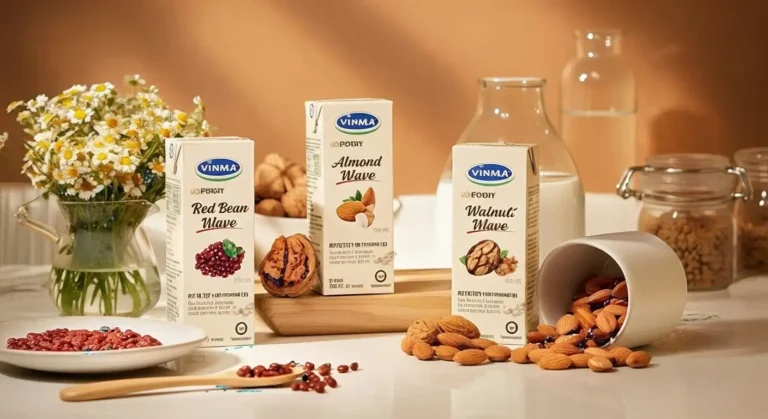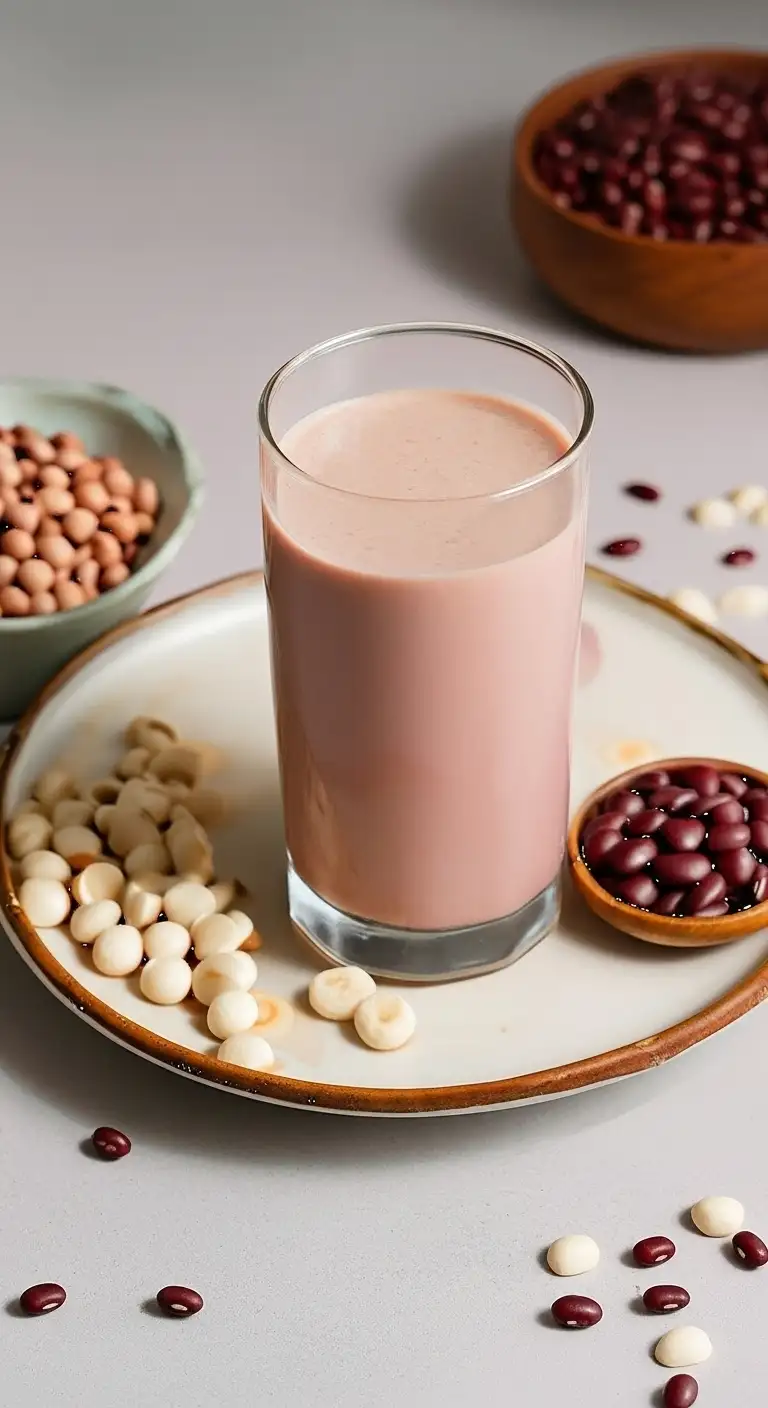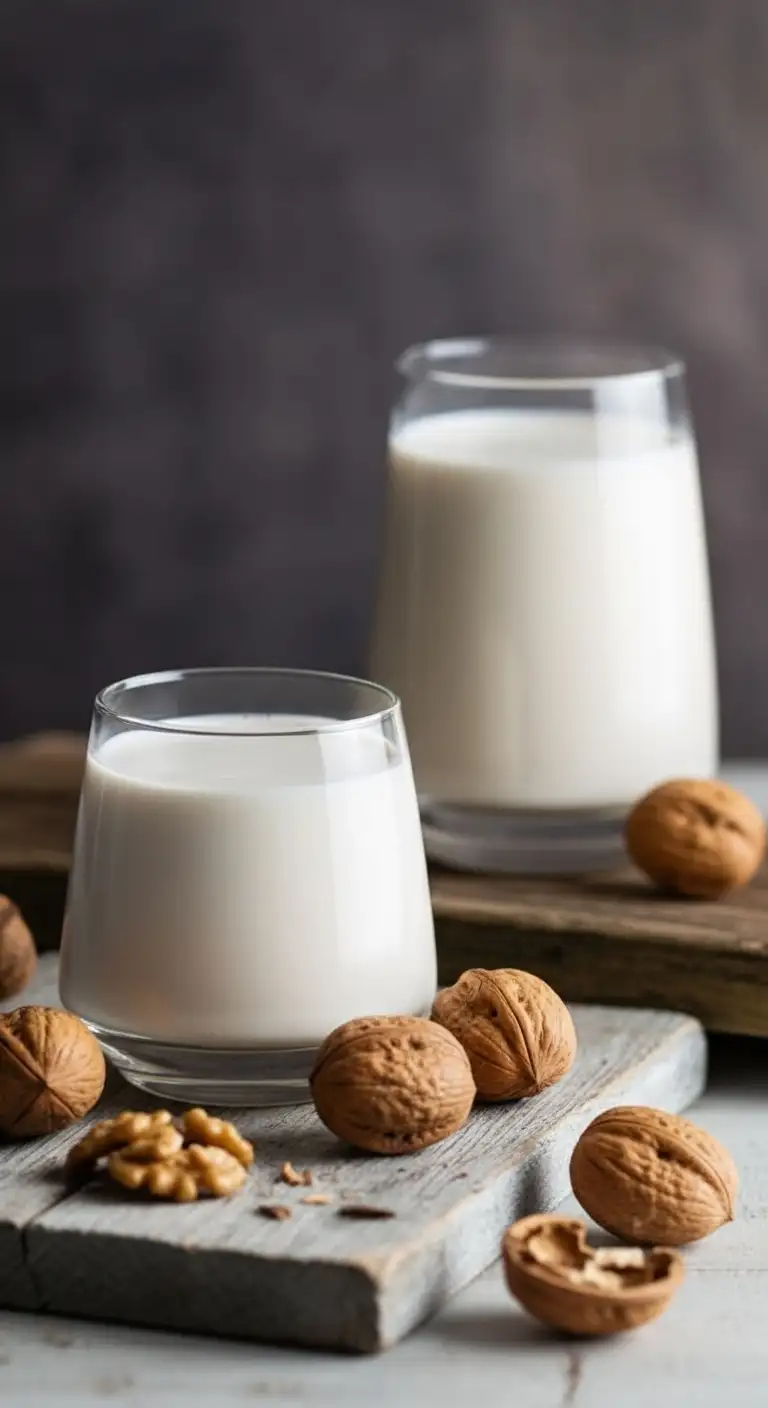Sữa Hạt (Nut Milk) and Sữa Đậu (Bean Milk) represent Vietnam’s long-standing tradition of plant-based beverages. Before the global craze for non-dairy alternatives, these wholesome, freshly made milks were a daily staple, valued for their cooling properties, high nutrition, and comforting flavor. They are a healthy and delicious part of Vietnamese street-side refreshment.
The Basics: Sữa Hạt vs. Sữa Đậu
The term encompasses any liquid extracted from soaked and blended seeds, nuts, or legumes. They are essentially homemade, non-dairy milks, typically served slightly warm or chilled.
| Term | Meaning | Primary Ingredients | Typical Preparation |
|---|---|---|---|
| Sữa Đậu | Bean Milk | Soybeans (đậu nành), Black Beans (đậu đen), Mung Beans (đậu xanh). | Beans are soaked, blended with water, strained, and then cooked, usually with sugar and sometimes pandan leaf. |
| Sữa Hạt | Nut/Seed Milk | Lotus Seeds (hạt sen), Corn (bắp), Almonds (hạnh nhân), Walnuts (óc chó). | Seeds/Nuts are soaked, blended, and sometimes cooked. Often mixed with other beans or grains. |
Sweetness: These milks are generally slightly sweet, sweetened with cane sugar or rock sugar.
Texture: They are thicker and creamier than Western plant milks because they are rarely ultra-filtered, retaining more of the solids.
Health: Valued as a nutritious, protein-rich, and dairy-free drink, often consumed for breakfast or as an afternoon snack.

Diverse Varieties of Sữa Hạt and Sữa Đậu
The variety is expansive, often based on locally available ingredients, blending unique Vietnamese flavors:
Sữa Đậu Nành (Soy Milk): The classic and most popular. It is simple, creamy, and often infused with pandan leaf for a subtle, floral aroma. It is the base for many other mixes.
Sữa Đậu Đen (Black Bean Milk): Known for its deep color and robust, slightly nutty flavor. It’s considered highly nutritious and cooling.
Sữa Hạt Sen (Lotus Seed Milk): A delicate, luxurious milk made from lotus seeds. It is famous for its mild, calming properties and is often consumed before bed.
Sữa Bắp (Corn Milk): A sweet, vibrant yellow milk made from fresh sweet corn kernels. It has a distinctive creamy texture and an intense corn flavor, making it a favorite during corn season.
Mixed Bean/Nut Milks: Modern commercial and homemade versions often combine ingredients for enhanced nutrition and flavor, such as:
Sữa Óc Chó Hạnh Nhân Đậu Đen (Walnut, Almond, and Black Bean Milk)
Sữa Đậu Đỏ Yến Mạch (Red Bean and Oat Milk)
How to Drink Sữa Hạt / Sữa Đậu
Temperature is Key: Unlike Western plant milks, which are almost always served cold, Vietnamese bean and nut milks are commonly enjoyed at different temperatures depending on the time of day or personal preference:
Hot (Nóng): Sữa Đậu Nành and Sữa Bắp are frequently served piping hot in small mugs, especially on cooler mornings or evenings, offering comfort and warmth.
Cold (Lạnh): During the hot midday, they are poured over ice (đá) for a refreshing drink.
Serving: They are sold fresh by street vendors (often from large pots or containers on a bicycle or cart) or available pre-packaged in cartons from supermarkets (like Fami or Vinamilk brands).
Accompaniments: Soy milk (Sữa Đậu Nành) is traditionally paired with savory Vietnamese fried dough sticks known as Bánh Tiêu or Bánh Quẩy for breakfast, similar to how coffee or tea is enjoyed.

Regional Differences
The differences are less pronounced in the preparation of the basic milks, but rather in the local ingredients used and the preferred serving temperature, reflecting the regional climate and culinary philosophy.
| Region | Primary Style & Flavor Profile | Serving Preference | Noteworthy Differences |
|---|---|---|---|
| North (Hanoi) | Traditional, Less Sweet, Warm/Hot. Emphasizes the pure flavor of the beans/nuts. Sweetness is more balanced, often using less sugar. | Commonly served HOT (nóng) or warm, especially for breakfast or late at night due to the cooler climate. | Strong tradition of pairing Sữa Đậu Nành with Bánh Quẩy (fried dough sticks). |
| Central (Hue / Da Nang) | Balanced, Earthy. Utilizes local varieties of beans and often incorporates unique central flavors, such as the use of lotus seeds from nearby lakes. | Served both hot and cold, depending on the specific city and weather. | The Central Region's famous Hạt Sen (Lotus Seed) is a key ingredient in their specialty milks and drinks. |
| South (Saigon/Mekong Delta) | Sweeter, Creamier, Tropical. Due to the abundance of tropical resources like coconut and sugarcane, Southern drinks tend to be sweeter. They may incorporate more exotic nuts and blends. | Overwhelmingly served COLD (lạnh) with lots of ice due to the year-round tropical heat. | More commercial varieties (boxed milk) featuring rich nut blends (óc chó, hạnh nhân) are popular, often with higher sugar content. |




